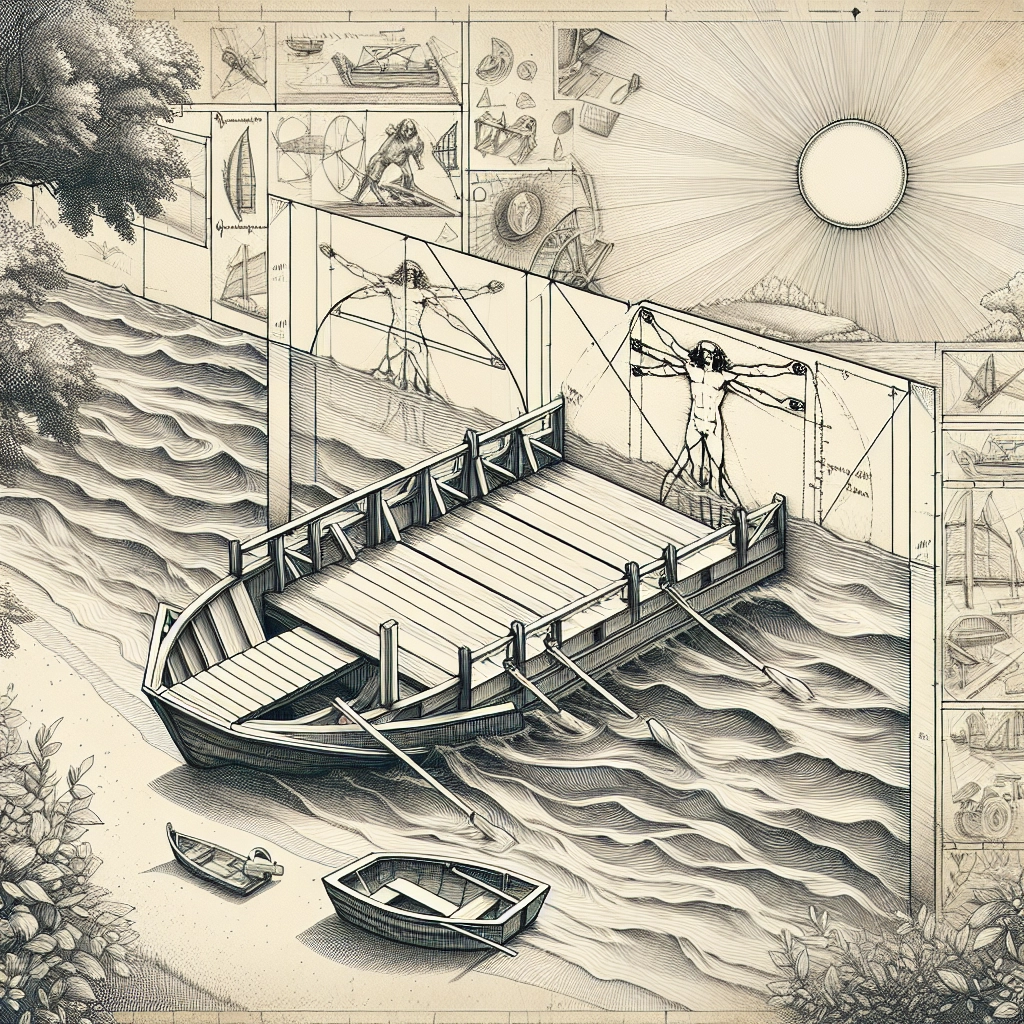
- Published on
- Authors

- Name
- ric de yuga 😄
DIY Summer Dinghy Project: Build Your Own Floating Deck! 🌞🚤
Introduction: Your Personal Water Oasis
Building a summer dinghy is like creating a mobile patio for the water. It's a fun project that combines basic engineering, physics, and a bit of creativity. Let's dive into the components and physics behind your floating deck!
Flotation: The Science of Staying Afloat
Understanding buoyancy is key to your dinghy's success. Archimedes' principle states that the upward buoyant force equals the weight of the fluid displaced.
Barrel Basics:
- 55-Gallon Drums: Your buoyancy powerhouses
- Dimensions: 23 inches diameter, 33 inches height
Buoyancy Force:
- Steel Drum: 411 lbs of buoyant force
- Plastic Drum: 437 lbs of buoyant force
Tip: To calculate the number of barrels needed, divide your total weight (dinghy + passengers + gear) by the buoyant force of each barrel. Always round up for safety!
Physics Fun: Try this experiment - float different objects in your bathtub and observe how much water they displace. This is the same principle keeping your dinghy afloat!
Deck: Your Floating Foundation
The deck is where physics meets comfort. We're aiming for a balance between strength and weight.
Dimensions: 10 ft x 6 ft
Material Choice:
- Wood: Cedar or treated pine for water resistance
- Consider the weight-to-strength ratio of your chosen wood
Tip: Add a layer of artificial turf (6x8 ft) for comfort and style. It's like having a little putting green on water!
Physics Insight: The deck distributes weight evenly across the barrels, following the principle of uniform load distribution.
Frame: The Structural Backbone
Your frame is crucial for maintaining stability and connecting the deck to the barrels.
Options:
- Metal Frame: Durable but heavier
- Wood Frame: Lighter but requires more maintenance
Design Tip: Extend the frame 2 ft below the deck to securely hold the barrels. This lowered center of gravity increases stability, following the principles of rotational inertia.
Fun Fact: The lower you place the barrels, the more resistant your dinghy will be to tipping, just like how a low-riding car is harder to roll!
Engine Options: Propulsion Physics
Choosing your engine is about balancing power, weight, and legal requirements.
Trolling Motor (Under 6 HP):
- No license required
- Silent operation
- Perfect for calm waters
2-Stroke Engine:
- More power, but noisier
- Better for larger bodies of water
Physics at Play: The motor's thrust must overcome the water's drag force. Experiment with different speeds to find the sweet spot between fuel efficiency and speed!
Building Tips and Tricks
- Water Test: Before full assembly, test each barrel's buoyancy individually.
- Weight Distribution: Keep heavier items centered and lower in the dinghy for better stability.
- Safety First: Always include life jackets and a small anchor.
- Maintenance Matters: Regularly check for water tightness and treat wood to prevent rot.
Conclusion: Your Physics-Powered Summer Adventure
Building your dinghy is like a real-life physics experiment. You're creating a floating platform that balances forces, manages weight distribution, and harnesses propulsion – all while having fun!
Remember, every adjustment you make affects your dinghy's performance. It's a perfect opportunity to see physics in action and create unforgettable summer memories.
Happy building and smooth sailing! May your DIY dinghy be the envy of the lake! 🌊🛠️🎉
